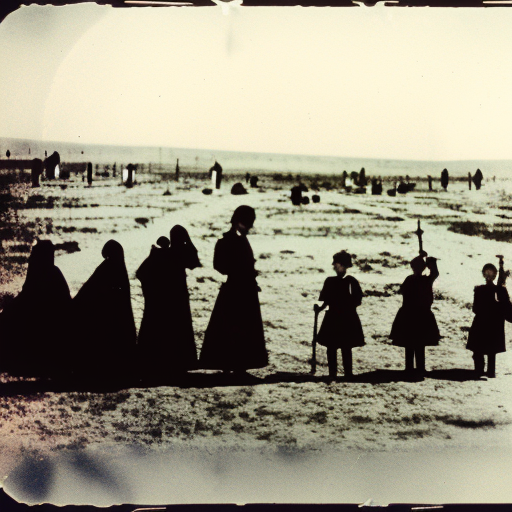Summary:
The Armenian genocide was a systematic campaign of mass killings and deportations carried out by the Ottoman Empire against the Armenian population during World War I. It resulted in the death of an estimated 1.5 million Armenians and the displacement of many more. The genocide was characterized by widespread violence, forced labor, and forced marches, with Armenians being targeted based on their ethnicity and religion. Despite international recognition and condemnation, the Turkish government continues to deny the genocide.
Background:
The Armenian genocide took place between 1915 and 1923, during the final years of the Ottoman Empire. Armenians, an ethnic and religious minority in the empire, had faced discrimination and periodic violence for centuries. However, tensions escalated during World War I when the Ottoman government accused Armenians of collaborating with the enemy and planning a rebellion.
The Genocide:
The genocide began in April 1915 when the Ottoman government arrested and executed hundreds of Armenian intellectuals and community leaders in Constantinople (now Istanbul). This was followed by the deportation and mass killing of Armenians throughout the empire. The methods used included mass shootings, forced labor, death marches, and starvation. Many Armenians were also subjected to torture, rape, and forced conversion to Islam.
International Response:
News of the atrocities spread quickly, and several international organizations, including the United States, condemned the genocide. However, the Ottoman Empire’s allies, Germany and Austria-Hungary, turned a blind eye to the events, and no significant action was taken to stop the killings. The lack of intervention allowed the genocide to continue for several years.
Aftermath:
By 1923, the Ottoman Empire had collapsed, and the Republic of Turkey was established. The new Turkish government, led by Mustafa Kemal Atatürk, denied responsibility for the genocide and sought to erase it from history. Surviving Armenians faced further persecution, and attempts to seek justice were largely unsuccessful.
Recognition and Denial:
Despite the Turkish government’s denial, the Armenian genocide has been recognized by many countries and international organizations. In 2019, the United States officially recognized the events as genocide, joining several other countries, including France, Germany, and Russia. However, Turkey continues to reject the term “genocide” and has lobbied against its recognition.
Legacy:
The Armenian genocide has had a lasting impact on the Armenian diaspora and the collective memory of the Armenian people. It remains a contentious issue between Armenia and Turkey, with ongoing calls for recognition and reparations. The genocide also serves as a reminder of the importance of acknowledging and confronting past atrocities to prevent their recurrence.
Conclusion:
The Armenian genocide was a systematic campaign of mass killings and deportations carried out by the Ottoman Empire during World War I. It resulted in the death of an estimated 1.5 million Armenians and the displacement of many more. Despite international recognition, the Turkish government continues to deny the genocide. The events of the Armenian genocide have had a lasting impact on the Armenian people and serve as a reminder of the need to confront and acknowledge past atrocities.












